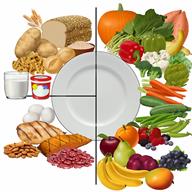ThisisPatientEngagementcontent
Heart-Healthy Eating Plan
Learn more about our Patient Engagement products now! Turn your patients into active participants in their healthcare by giving them easy access to the same evidence-based information you trust – but delivered in an easy-to-understand format.
Many factors influence your heart health, including eating and exercise habits. Heart health is also called coronary health. Coronary risk increases with abnormal blood fat (lipid) levels. A heart-healthy eating plan includes limiting unhealthy fats, increasing healthy fats, limiting salt (sodium) intake, and making other diet and lifestyle changes.
Cooking
Cook foods using methods other than frying. Baking, boiling, grilling, and broiling are all good options. Other ways to reduce fat include:Meal planning

Fats
General information
Fruits
All fresh, canned (in natural juice), or frozen fruits.
Vegetables
Fresh or frozen vegetables (raw, steamed, roasted, or grilled). Green salads.
Grains
Most grains. Choose whole wheat and whole grains most of the time. Rice and pasta, including brown rice and pastas made with whole wheat.
Meats and other proteins
Lean, well-trimmed beef, veal, pork, and lamb. Chicken and turkey without skin. All fish and shellfish. Wild duck, rabbit, pheasant, and venison. Egg whites or low-cholesterol egg substitutes. Dried beans, peas, lentils, and tofu. Seeds and most nuts.
Dairy
Low-fat or nonfat cheeses, including ricotta and mozzarella. Skim or 1% milk (liquid, powdered, or evaporated). Buttermilk made with low-fat milk. Nonfat or low-fat yogurt.
Fats and oils
Non-hydrogenated (trans-free) margarines. Vegetable oils, including soybean, sesame, sunflower, olive, avocado, peanut, safflower, corn, canola, and cottonseed. Salad dressings or mayonnaise made with a vegetable oil.
Beverages
Water (mineral or sparkling). Coffee and tea. Unsweetened ice tea. Diet beverages.
Sweets and desserts
Sherbet, gelatin, and fruit ice. Small amounts of dark chocolate.
Limit all sweets and desserts.
Seasonings and condiments
All seasonings and condiments.
The items listed above may not be a complete list of foods and beverages you can eat. Contact a dietitian for more options.
Fruits
Canned fruit in heavy syrup. Fruit in cream or butter sauce. Fried fruit. Limit coconut.
Vegetables
Vegetables cooked in cheese, cream, or butter sauce. Fried vegetables.
Grains
Breads made with saturated or trans fats, oils, or whole milk. Croissants. Sweet rolls. Donuts. High-fat crackers, such as cheese crackers and chips.
Meats and other proteins
Fatty meats, such as hot dogs, ribs, sausage, bacon, rib-eye roast or steak. High-fat deli meats, such as salami and bologna. Caviar. Domestic duck and goose. Organ meats, such as liver.
Dairy
Cream, sour cream, cream cheese, and creamed cottage cheese. Whole-milk cheeses. Whole or 2% milk (liquid, evaporated, or condensed). Whole buttermilk. Cream sauce or high-fat cheese sauce. Whole-milk yogurt.
Fats and oils
Meat fat, or shortening. Cocoa butter, hydrogenated oils, palm oil, coconut oil, palm kernel oil. Solid fats and shortenings, including bacon fat, salt pork, lard, and butter. Nondairy cream substitutes. Salad dressings with cheese or sour cream.
Beverages
Regular sodas and any drinks with added sugar.
Sweets and desserts
Frosting. Pudding. Cookies. Cakes. Pies. Milk chocolate or white chocolate. Buttered syrups. Full-fat ice cream or ice cream drinks.
The items listed above may not be a complete list of foods and beverages to avoid. Contact a dietitian for more information.
This information is not intended to replace advice given to you by your health care provider. Make sure you discuss any questions you have with your health care provider.
Cookies are used by this site. To decline or learn more, visit our cookie notice.
Copyright © 2025 Elsevier, its licensors, and contributors. All rights are reserved, including those for text and data mining, AI training, and similar technologies.